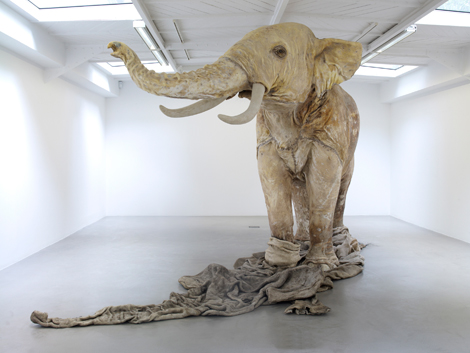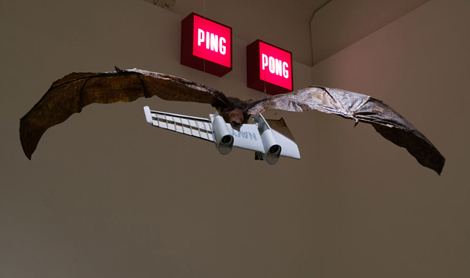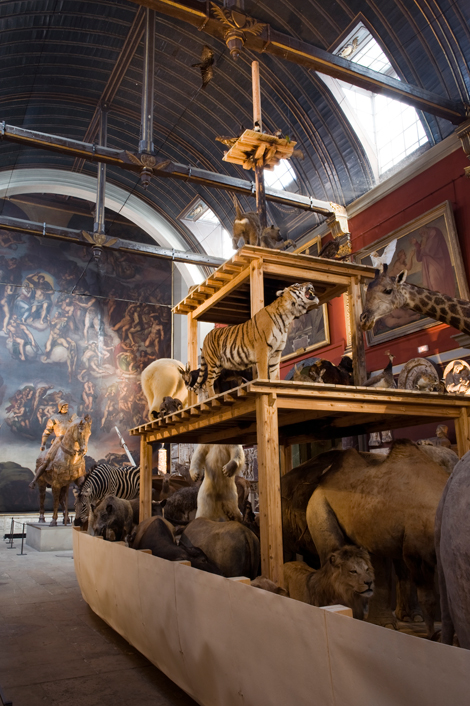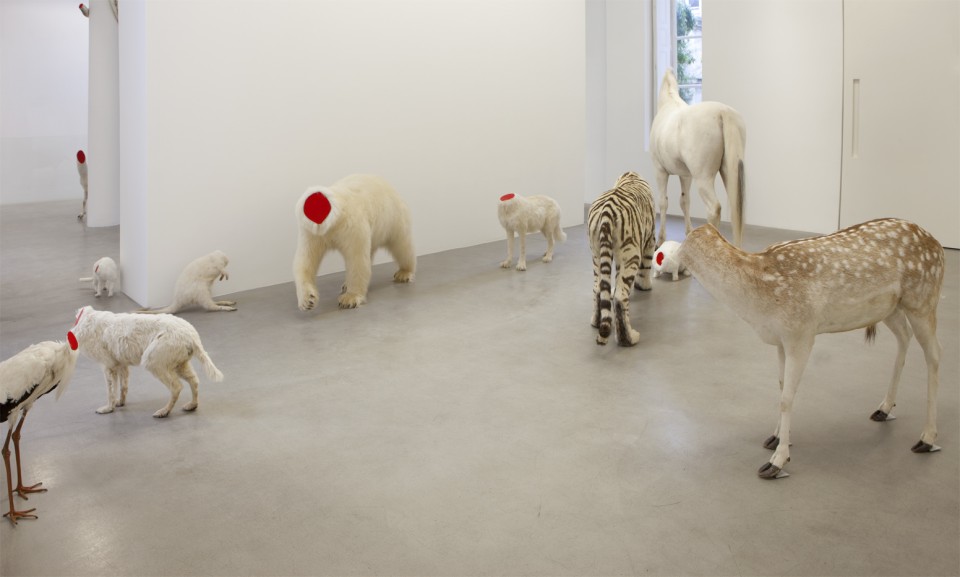HUANG YONG PING

© ADAGP Huan Yong Ping, Photo : Marc Domage
Né en 1954 à Xiamen, Chine. Vit et travaille à Paris depuis 1989.
Born in 1954 in Xiamen, China. Lives and works in Paris since 1989.
Huang Yong ping a été une figure majeure de l’art d’avant-garde chinois des années 1980. Influencé par Marcel Duchamp et le dadaïsme, il avait alors fondé le mouvement « Xiamen Dada ». C’est en 1989 que l’artiste avait été découvert lors de la célèbre exposition « Les Magiciens de la Terre » au Centre Pompidou, l’année de la répression de la place Tianamen. Cette exposition fondatrice avait consisté à ouvrir la scène de l’art contemporain international aux artistes non occidentaux. Huang Yongping s’était installé à Paris dans la foulée, avant d’être naturalisé français.
L’artiste, qui reste encore méconnu du grand public, est pourtant très exposé, en France comme à l’étranger. Il avait représenté la France avec Jean-Pierre Bertrand à la 48e biennale de Venise en 1999. Il a récemment investi la chapelle des Petits-Augustins, à l’école des Beaux-Arts de Paris, avec son Arche (2009) inquiétante, remplie d’animaux taxidermisés, le Musée de Hospice Comtesse avec Wu Zei, son énorme pieuvre, dans le cadre de Lille 3000 (2012), ou encore l’estuaire de la Loire avec le squelette géant d’un Serpent d’océan (2012), une sculpture devenue pérenne. En 2012 encore, il réinventait la fin du monde avec l’exposition « Bugarach » chez son galeriste Kamel Mennour, à Paris.
[En 2013], pour la Nuit Blanche, l’artiste avait déployé un vivarium aux allures de station spatiale de 36 mètres de long au Carreau du Temple, nouvel et large espace d’exposition du Marais, tandis que le MAC de Lyon lui dédiait une grande exposition personnelle : « Amoy/Xiamen ». [L’été 2014], le Voyage à Nantes consacre une rétrospective à son travail, organisée autour de sa dernière création : une spectaculaire Mue de serpent translucide de 120 mètres de long.
L’homme, toujours, sait surprendre par ses installations à la fois théâtrales, violentes et symboliques, à l’affût des mutations du monde. David Moinard, le commissaire de l’exposition nantaise, a d’ailleurs choisi de présenter son travail sous cet angle, celui des « Mues » : « Les mues, il faut l’entendre dans le rapport au monde. Huang Yong Ping s’intéresse aux mues du monde », qu’elles soient sociales, culturelles et environnementales. « Ses œuvres explorent les différents types de pouvoirs qui gèrent le monde aujourd’hui : le pouvoir financier, le pouvoir militaire et le pouvoir religieux. » A chaque fois se pose la place de l’homme, à l’échelle d’un monde qui s’emballe.
Source: Emmanuelle Jardonnet pour Le Monde.fr
Huang Yong Ping was a major figure of the Chinese avant-garde art of the 1980s. Influenced by Marcel Duchamp and Dadaism, he founded the movement « Xiamen Dada ». It was in 1989 that the artist had been discovered at the famous exhibition « Magicians of the Earth » at the Centre Pompidou, the year of the Tiananmen Square events. The purpose of this important exhibition was to open the scene of international contemporary art to non-Western artists. Huang Yong Ping had then moved to Paris, before being naturalized French.
The artist, who is still unknown to the public, is nevertheless very shown in France and abroad. He represented France with Jean-Pierre Bertrand to the 48th Biennial of Venice in 1999. He recently invested the Chapelle des Petits-Augustins, at the School of Fine Arts in Paris with his disturbing Ark (2009) filled of animals in taxidermy, the Museum of Hospice Comtesse with Wu Zei, a huge octopus, as part of Lille 3000 (2012), or the Loire estuary with the giant skeleton of an ocean Serpent (2012) which has became a permanent sculpture. In 2012 again, he reinvented the end of the world with the exhibition « Bugarach » at his gallery Kamel Mennour in Paris.
[In 2013] for Nuit Blanche, the artist had made a 36 meters long vivarium that looks like a space station at the Carreau du Temple, a new and wide space of exposure in the Marais, while the MAC Lyon dedicated to him a major solo exhibition, « Amoy / Xiamen. » [In summer 2014], the Voyage à Nantes organized a retrospective of his work, around his latest creation: « Sloughing », a spectacular translucent snake of 120 meters long.
The artist always knows how to surprise through his facilities in both theatrical, violent and symbolic installations about the changing world. David Moinard, the curator of the exhibition in Nantes, has also chosen to present his work in the way of « Sloughing »: « The sloughings must be understood in relation to the world. Huang Yong Ping is interested in the sloughings of the world « , whether social, cultural and environmental. « His works explore the different types of powers that run the world today: the financial power, military power and religious power. » Every time he talks about the place of the men, on the scale of a racing world.
Source: Emmanuelle Jardonnet pour Le Monde.fr
TRAVAUX/WORKS :

© ADAGP Huan Yong Ping


Photo : Fabrice Seixas

